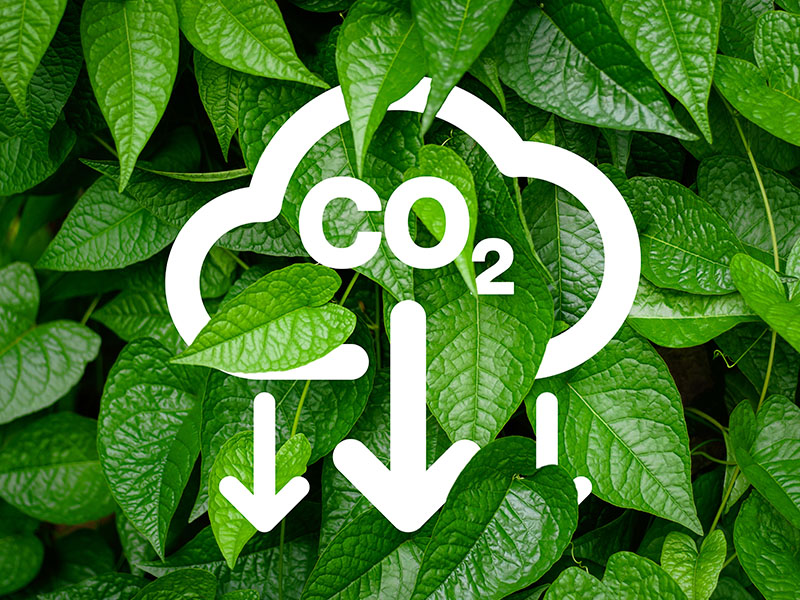Speeding up a decarbonization process
We identify a feasible path towards decarbonization which minimizes the impact on the existing operations
Selecting the decarbonization strategy is not an easy task
The decarbonization of energy-intensive industry requires taking appropriate and innovative solutions to shift current processes towards carbon-free production. Each industry faces its own mitigation pathways, and carbon dioxide (CO2) mitigation pathways include the use of technologies that are sometimes not sufficiently proven or not yet mature at an industrial scale.
The challenge of decarbonization for industries
Achieving decarbonization goals within the ambitious deadlines set is probably the biggest challenge many companies face.
However, all the industries (energy, technology, financial sector, etc.) are expressing their willingness to make progress for this objective, not only by such declarations, but also by making important efforts.
Actually, the technologies exist, and they are not exceptionally complicated; the main challenge lies in optimizing their performance to achieve competitive prices for the products generated. Energy-intensive companies have declared and committed to decarbonizing their activities; and other companies with lower energy consumption did it as well in their production processes. Energy companies are orienting their business models towards the decarbonization of the energy supply. The financial community is demanding that companies commit to lower carbon content in their products and services. Governments and institutions are regulating for driving decarbonization.
Perhaps the greatest challenge in the short and medium term is structuring long term solid logistics chains for the use of raw materials in circularity schemes.
Many of the decarbonization paths lie through the replacement of entire value chains, which allow to use products based on raw materials or fuels with very low or zero carbon content.
The price for these products is currently increased compared to current alternatives. In the short and medium term, Europe is providing very important financial support so that the first projects with these technologies can take shape.
In the medium and long term, companies must gradually incorporate these higher prices into their production processes and transfer them to the end customer. Even today, in some cases, the reflection of this increase in cost is something that seems acceptable.
The tools are available. But this is an effort that we must make among all consumers; It is not only a problem of the energy industry, nor of any other specific agent.


The steps for decarbonization
First, reduce energy consumption.
Identify those energy efficiency measures that allow optimizing energy consumption. They constitute an important source of savings that helps finance subsequent actions.
Next, electrify all those processes that allow it. This electrification must be performed from renewable sources. The processes must allow admitting the intermittency of these sources, incorporating energy storage schemes.
For those processes that cannot be electrified, it is necessary to evaluate the replacement of fossil raw materials with renewable ones: green hydrogen or its derivatives, waste, or biomass.


All those processes that cannot be decarbonized through the above measures must incorporate carbon sequestration and recovery systems.
Finally, those emissions that cannot be eliminated by any of the above actions may be remedied by applying nature-based solutions (reforestation or afforestation) or direct carbon capture systems from the air.
The specific application of these actions to each process will depend on its features. For example, in the transport sector, decarbonization objectives are possible to be achieved by the first two actions. But for the decarbonization of maritime transport industry it will be necessary to apply the third one and replace current fossil fuels with other alternatives such as green ammonia or green methanol.
And in complex industrial processes, it will be necessary to study the possibility to perform the above-mentioned actions on the subprocess basis. It is very important to highlight that, in energy-intensive industries, a solid decarbonization strategy must consider all the actions identified: it has already been indicated that there is no single technology that solves the problem.
As for the economic activities that aspire to replace fuels or raw materials based on fossil energies with biofuels or biochemicals, they face similar challenges: the main one, which is the continuous availability and the adequate quality of waste or biomass that allows long-term supply term of their activities.
The roadmap for decarbonization
It is not easy to integrate all the variables mentioned above into a decarbonization strategy. The technological and value chain maturity, the evolution of the yields or the prices of the different technological alternatives, the availability of raw material in sufficient quantity and quality in the long term or the restrictions of its implementation in existing production processes are important variables when establishing this strategy.
The definition of a roadmap for the decarbonization of an industrial plant must consider all these factors and aims to answer all these questions: what to invest in? When to do it? How are these investments integrated into existing operations? How do you maximize the value of the investment?



